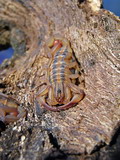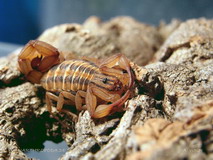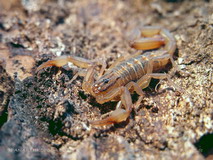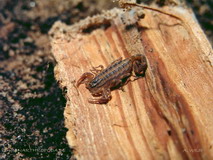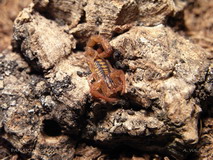- Akravidae
- Bothriuridae
- Buthidae
- Babycurus jacksoni
- Centruroides gracilis
- Centruroides meisei
- Centruroides nigrenscens
- Hottentotta hottentotta
- Lychas mucronatus
- Lychas scutilus
- Parabuthus pallidus
- Parabuthus raudus
- Parabuthus villosus "black"
- Caraboctonidae
- Chactidae
- Chaerilidae
- Euscorpiidae
- Hemiscorpiidae
- Iuridae
- Pseudochactidae
- Scorpionidae
- Superstitioniidae
- Troglotayosicidae
- Typhlochactidae
- Vaejovidae

Centruroides meisei (Hoffmann, 1939)
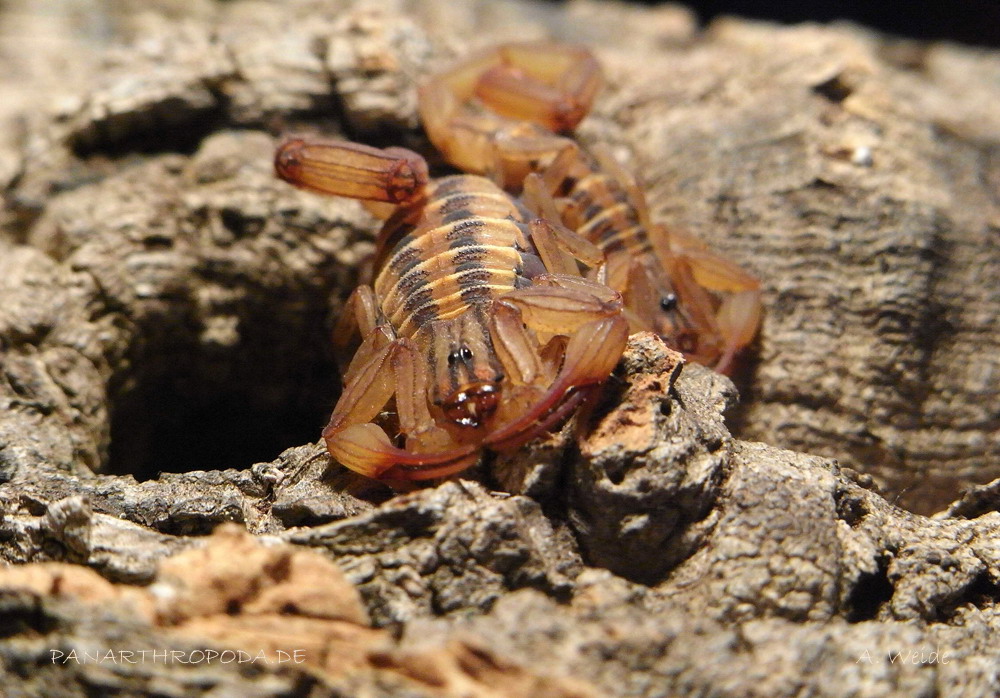
Adult pair
Origin and occurrence
As far as I know, Centruroides meisei has been found in Mexico only. The specimen in my care originated from the south-west coast (Jalisco).
The change from rainy to dry season is characteristic for the all year warm climate. These fluctuations needn't be taken into account when keeping this species though.
Appearance and sexual dimorphism
The sexes are easily distinguished by morphology. The males are smaller and the females significantly bulkier. The metasomal segments of the male are more slender and longer, too, but this is not as exaggerated as in most Centrutoides. I can not make any statements about the count of pectinal teeth.
This species is rather small and reaches from 3 to 4 cm. Centruroides meisei has a yellow-brown base coloration, telson, tibia/tarsus of the pedipalps and the foremost area of the prosoma including the chelicerae are reddish. The prosoma is covered by four stripes that continue as two thicker stripes over the mesosoma.
Behavior
Centruroides meisei is a rather nervous species. The males flee immediately when disturbed, the females are only slightly "slower" when it comes to fleeing. In this aspect the speed of this species should be kept in mind. Threatening or even attempts to sting occur seldom.
As a bark-living species, Centruroides meisei prefers pieces of bark to climb and to retreat into, sharing hideouts in groups. Aggression inside groups is small to nonexistent. Adult specimen can be kept in groups without a problem, in juvenile specimen one should account for cannibalism, especialls during molts.
Centruroides meisei shows itself during day rather often, which makes the species attractive to beginners.
Keeping conditions
According to its origin one should keep this species at about 30 °C during day and 20 °C during night. Spraying should be done once per week but in a ample manner, a shallow bowl (be advised of the danger of drowning) of water can be offered as well. A mixture of sand and earth can be used as substrat, humus can be used, too.
A container of 20x20x20 cm can house 10 specimen without a problem since Centruroides meisei stays so small. As a bark-living scorpion this species perfers upright pieces of bark that are used for hiding and climbing. In doubt a higher then wider container makes more sense since this species will use the height more then the surface on the ground.
One can resign from using big prey since the species is so small. Adult females can be fed with middle, adult males with small crickets.
Mating and raising the young
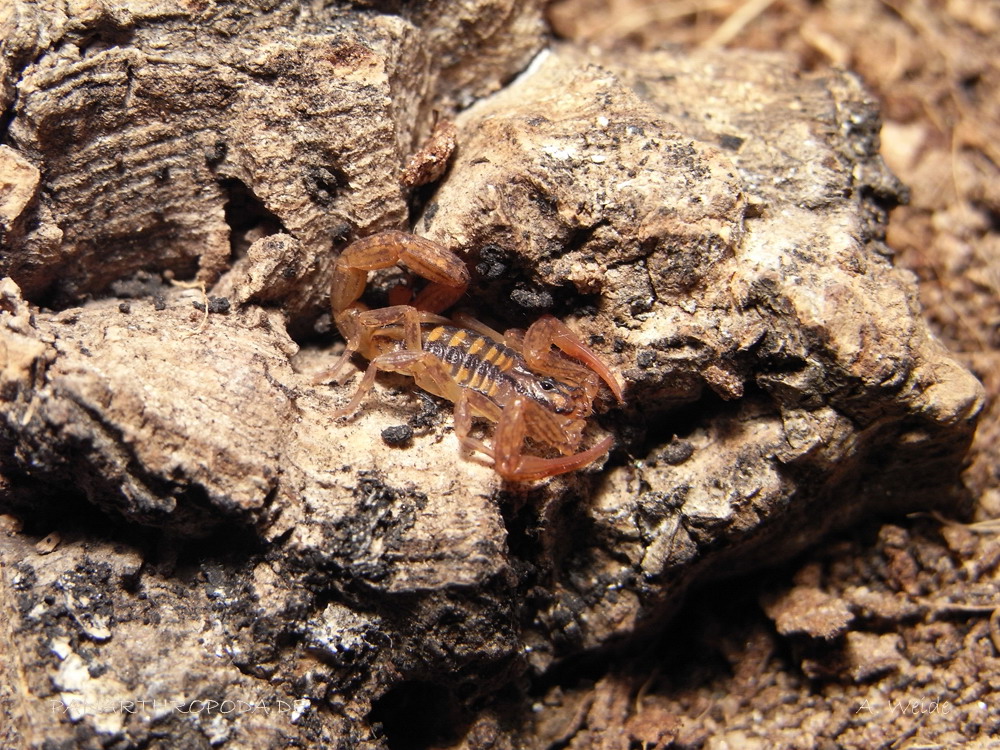
Young in instar 3
When kept in groups offspring will appear almost by itself. Just keep in mind to keep Centruroides meisei neither to hot nor to dry. The females will litter 3 to 4 months after fertilization. The young - usually about 20 or so - will molt for the first time during the first week on the mother's back und leave it's back a few days later.
Centruroides meisei is still very small in second isntar. Micro crickets should be fed at this point in time, one to two molts later small crickets can be fed, too. When kept and fed like mentioned above, the young will grow quickly and can reach adulthood within 5 to 6 months (7. instar for females, 6. instar for males). It is important not to keep the young too dry because they can get stuck in the exuviae during molt. When kept too wet the risk of mites and mycosis increases.
Centruroides meisei can be kept in groups even when juvenile, but one should keep in mind the risk of cannibalism. Ample feeding and hideouts are important in this cases. Raising the young one by one is without a doubt safer.
A. Weide
